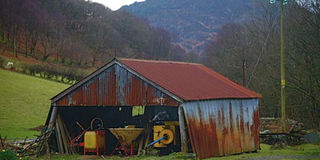Diary of a poultry farmer: The convenience of a backyard store

A backyard farm store where farming tools and equipment can be kept. FILE PHOTO | NATION MEDIA GROUP
What you need to know:
- Before deciding on storage space for your farm equipment, you need to figure out what equipment you should have.
- This new system I improvised has even made inventory management easier. So, instead of Cleopas shuffling through inventory records to see which item is missing, what he does instead is to look at the labels on the wall.
- Now, another thing I have realised farmers need to consider is storage space for feeds.
- For eggs, I have a special room with shelves where I store them.
I had finished the morning feed formulation class two weekends ago on my farm in Njiru, Nairobi, and I had some time before calling it a day.
I, therefore, asked my farm manager to gather some tools so that we could do some gardening that included trimming the grass, the flowers and the hedge. Besides rearing poultry, gardening is my other passion.
“Get a wheelbarrow, spade, jembe, shovel, hammer, nails and a slasher,” I told him.
Now, to my surprise, it took him about 45 minutes to gather the tools that I had expected he would bring in a jiffy.
That morning, when I was driving in, I had found the wheelbarrow placed upside down at the gate, and broken pieces of drinkers and feeders scattered around. There was a jembe on the roof deck and a panga on the walkway.
You will recall in one of my articles that I had talked about designing innovative farm structures and farm environments.
The piece discussed an ideal poultry house that provides birds with a comfortable environment to protect them from extremities of weather like rain, wind, sunshine, diseases and predators.
The article stressed the ideal stocking density of about two square feet per bird, among other things.
I had all that experience after redesigning my coop to include a double storey floor raised about two feet above the ground to enable the birds to free-range below.
That time, I assumed I had done the best until I asked Cleopas to fetch the tools. I realised that I hadn’t made provision for a backyard store to keep my farm equipment in a way that makes it easy to retrieve them.
STORING FARM EQUIPMENT
I thought that because I keep an equipment and supply inventory, among other records, that was enough.
At the beginning of every month, I normally took an inventory of any new equipment and supplies I had purchased and added to the existing list. I then laminated the list and filed.
But what I realised was that keeping an inventory of equipment is the easier part. You see, you need a place for keeping equipment.
Before deciding on storage space for your farm equipment, you need to figure out what equipment you should have.
For example, a tractor will not occupy the same space as a wheelbarrow, or a hammer, but it will probably take you more time to locate the hammer than the tractor if you don’t plan well.
Before I left the farm, I came up with an easy way to store my tools. I dedicated a room for storing all equipment.
But that was not all. I resolved to hang the tools on hooks on the wall and label each item alphabetically. That means that after an equipment is used, it is cleaned and returned to the exact spot.
If say, I need an axe and a wheelbarrow, all I need is to locate the “A” and the “W.”
This new system I improvised has even made inventory management easier. So, instead of Cleopas shuffling through inventory records to see which item is missing, what he does instead is to look at the labels on the wall.
Names with missing items means they are either lost or misplaced.
ENGINEERING THE WORK ENVIRONMENT
It is about two weeks now and this system has really helped. You see, I have good neighbours like Baba Muli who sometimes borrow tools from me.
I also do the same. When an item has been borrowed, Cleopas places a sticker against the item to indicate who has borrowed what and when. This makes follow up easier.
Now, another thing I have realised farmers need to consider is storage space for feeds. And this is the reason. I have had cases where workers give chick mash to layers and the vice versa.
Well, it is easy to blame the worker for this mishap, but make it possible for him not to err.
We call it engineering the work environment. This means that instead of storing chick, growers and layers mash in the same room, you separate these and use colour coding for the different feeds.
For eggs, I have a special room with shelves where I store them. So, yes, you need a special place for them. Keeping them in the kitchen, for example, is inadvisable because of the heat from cooking or risk of breakage or water spillage.
I researched for some designs for backyard store for tools and I was surprised how innovative they can be.




